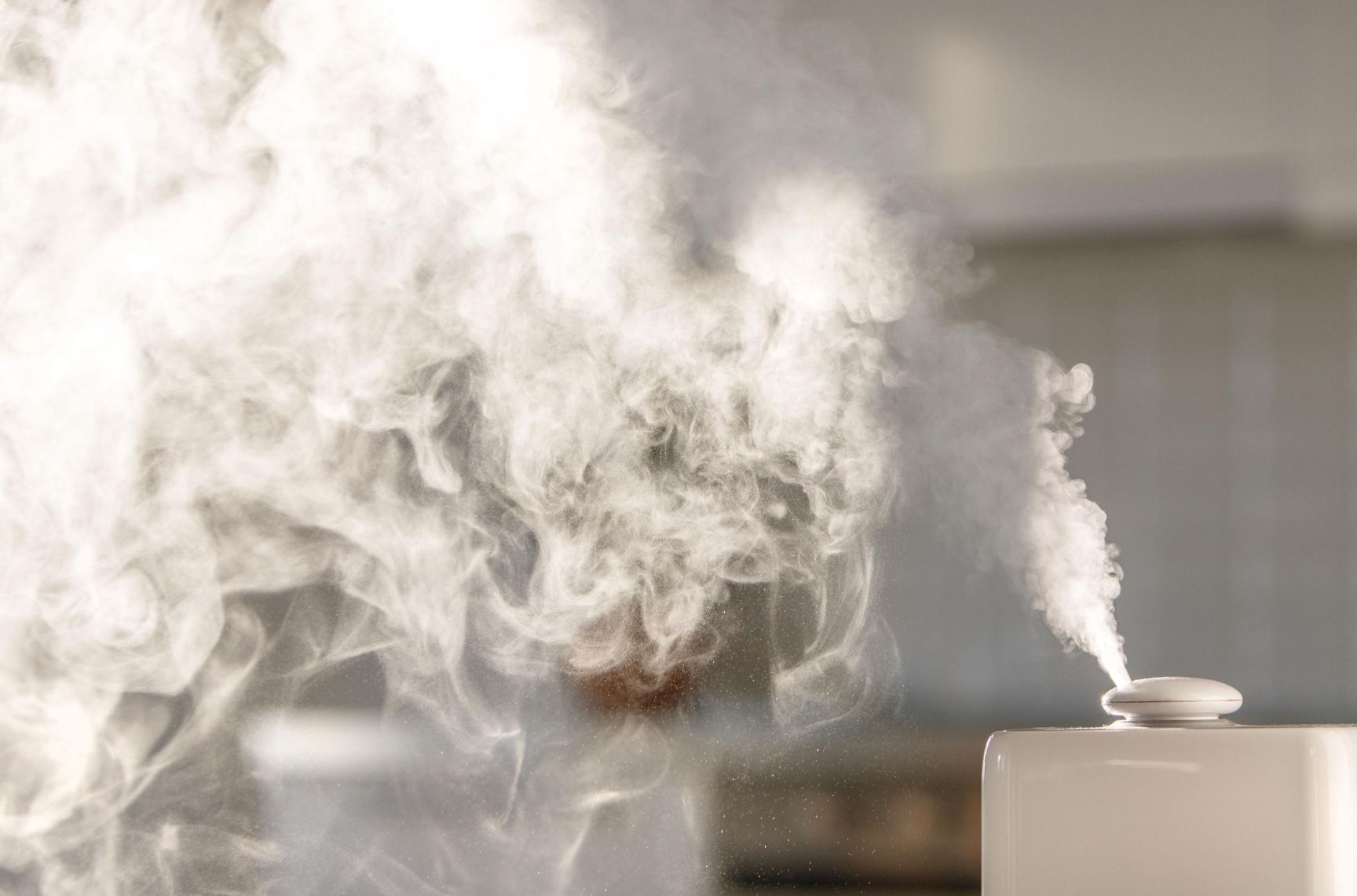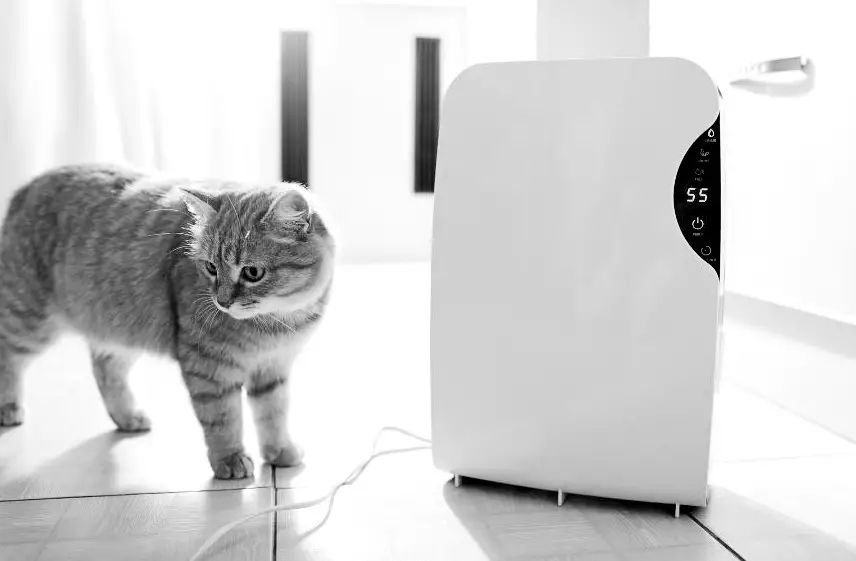Table of Contents

Stuffy Nose Solutions: Choosing Between a Humidifier and Dehumidifier
When dealing with a stuffy nose, the choice between a humidifier and a dehumidifier hinges on your home’s current humidity levels.
A humidifier is beneficial in adding moisture to the air when indoor humidity is below the optimal range of 40-60%, often during dry winter months or in arid climates.
Conversely, a dehumidifier is useful for reducing moisture in overly humid conditions, which can be common in hot, damp climates or during rainy seasons, to mitigate allergens like dust mites and mold that thrive in high humidity and can exacerbate nasal congestion.
Here’s a table to help you decide:
| Condition | Humidity Level | Recommended Device | Reason |
|---|---|---|---|
| Dry Indoor Air | Below 40% | Humidifier | To add moisture and alleviate dryness-induced stuffiness |
| Excessively Humid Air | Above 60% | Dehumidifier | To reduce moisture and control allergens causing congestion |
Do you have a stuffy nose? Is Congestion stopping you from thinking great thoughts? Oh the humanity… or is it the humidity?
The humidity outside and inside seems to have a lot to do with a lot of things. But what things? That’s not always too clear.
Stuffy Nose Dilemma: To Humidify or Dehumidify?
It depends.
Is the humidity in your home too high or too low?
A humidifier is to add humidity to a room or space when the relative humidity is too low.
A dehumidifier extracts humidity from the air when the humidity level is too high.
Another way to put it..
Is it winter outside and the house is dried out from the heater being on?
Or is it hot and humid outside and you’ve got a frizzy hairdo to go with your stuffy nose?
Stuffy Noses can happen when the humidity is too high and when the humidity is too low.
Dry air can cause you to feel stopped up and humid air can also cause cold-like symptoms because of dust mites and mold spores, along with other allergens.
What Should the Humidity be Set at?
According to NIH “The majority of adverse health effects caused by relative humidity would be minimized by maintaining indoor levels between 40 and 60%”.
So if your hygrometer is sitting at 50%, the relative humidity in your home is good.
But if you’re below 40%, using a humidifier to add moisture back into the air is the device that will help you correct your humidity and hopefully get you breathing through your nose better again.
If the relative humidity according to your hygrometer is sitting above the 60% mark, then your stuffiness may be due to allergens and dust mites which can be found in the air, when the humidity is too high.
 Keeping your Humidity Copacetic (steady as she goes)
Keeping your Humidity Copacetic (steady as she goes)
Humidity levels inside your home can often be corrected by doing a few things to keep the good in and stop the bad from getting in.
Excessive Humidity
Windows and doors are an easy place to start. Moisture can find its way indoors through the smallest of cracks. And when your windows have not been resealed for a long time, excessive humidity around the windows can cause the seals to warp and rot.
Ceiling of the windows with some caulking and weather stripping can help even out your relative humidity.
Extraction fans or another easy fix.
Those houses come equipped with extraction fans in the bathroom and kitchen and some even have them in the washroom.
Extraction fans are fairly inexpensive and can be put into the ceiling quickly.
Anytime you’re cooking with boiling water or taking a steamy shower or just washing the clothes, using your extraction fans will pull moisture out of the house and into the Attic.
Leaking pipes?
Other sources of humidity in the house can be coming from places or things more undesirable.
For instance if you have plumbing problems or a broken pipe that is leaking inside the house, you are going to be experiencing excessive humidity especially in the area where the pipe is broken.
Leaks not only cause humidity, they cause mold. And mold that has gone unchecked for very long can turn into a big problem fast.
And if you have mold allergies, you may have discovered why you were suffering with a stuffy nose in the process.
Water under the house.
Any water that gets underneath the house can cause humidification to rise from under the floor. This can also be a source of mold and affect your air quality to the point of suffering from allergy symptoms.
Sometimes water under the house can be corrected by stopping any type of ravine that has been maybe etched out by watering the grass. Putting a barrier in front of the water runoff will help it to keep from running beneath your home.
Crawl space encapsulation is a big process that entails putting a plastic barrier between the ground and your house.
Broken and stopped up gutters can also direct water to flow beneath the house.
Fixing these items can often keep the humidity down inside of your home.
Run the air conditioner.
Many times, we forget that the air conditioner works as a dehumidifier to reduce moisture in the air as it cools the air down.
Most modern air conditioners have a dehumidifier setting ready available so that you don’t have to have the cool setting running at the same time.
Basement Dampness
Basements tend to be damp and humid by nature. Since the walls are typically concrete that are built against the moist ground, moisture has a way of working itself into the basement through the concrete.
Sealing up any cracks in the concrete wall is a must to keep moisture out.
The excessive humidity in the basement makes it a less than desirable spot to hang out or sleep. The air quality in the basement can also be responsible for allergy symptoms.
Low Humidity Remedies
Some of the easiest low humidity remedies for your home can be found in the same place that you’re trying to keep the humidity out of in the hot and humid season.
Shower
One of the easiest ways to add some humidity back into your room is to take a long hot shower and leave the doors open. That will allow the steam to migrate into the adjoining rooms as well.
Taking more baths than showers?
Leaving the bathwater in the bath after you bathed will help humidify the area around the bathroom as well.
Dry air pulls humidity from anywhere I can. That’s why dry and cracking skin is such a huge symptom of low humidity.
Cups of water around the house.
Simply leaving some containers of water open around the house can help alleviate some of the dry air. But remember stagnant water can develop bacteria fairly quickly and cause other types of problems. So don’t fill up a 5 gallon bucket so you don’t have to mess with it later.
Boiling water.
This is an old trick I remember from growing up. Mom always had water simmering and boiling in the kitchen and on the heater vents that used to be part of the floor back when.
She often put Vicks and other essential oils in the water to disseminate throughout the house.
Leave the washroom door open.
This may be a little bit on the iffy side if you have any type of allergies to detergents that can make it into your airstream if you leave the washroom door open.
But if you don’t, leaving the washroom door open while you’re washing clothes can invite humidity into the surrounding area.
Leave the dishwasher.
Another one is as simple as leaving the bathwater. Let the dishwater sit after you’re done washing the pots and pans and let the water naturally condense into your Air.H
Should you use a humidifier or a dehumidifier when you have a stuffy nose?
The answer depends on whether humidity is too low or too high at the moment.
Low humidity can cause raw stuffy noses, where high humidity can be full of dust mites and bacteria that equates to having a stuffy nose.
A hygrometer is an inexpensive tool that can measure your humidity and tell you exactly or near exactly what your relative humidity is sitting at.
If it is below 40%, then your air is too dry and you need a humidifier to raise the moisture level.
If the humidity is above the 60% mark, then you need a dehumidifier to reduce the humidity.
And the humidifiers and dehumidifiers can be awesome tools, they are not always needed.
There are many things you can do around the house to lower and raise your humidity without purchasing any type of device.
Shutting the bathroom door or leaving the bathroom door open depending on the season is an easy way to add and diminish some of the humidity in the house.










